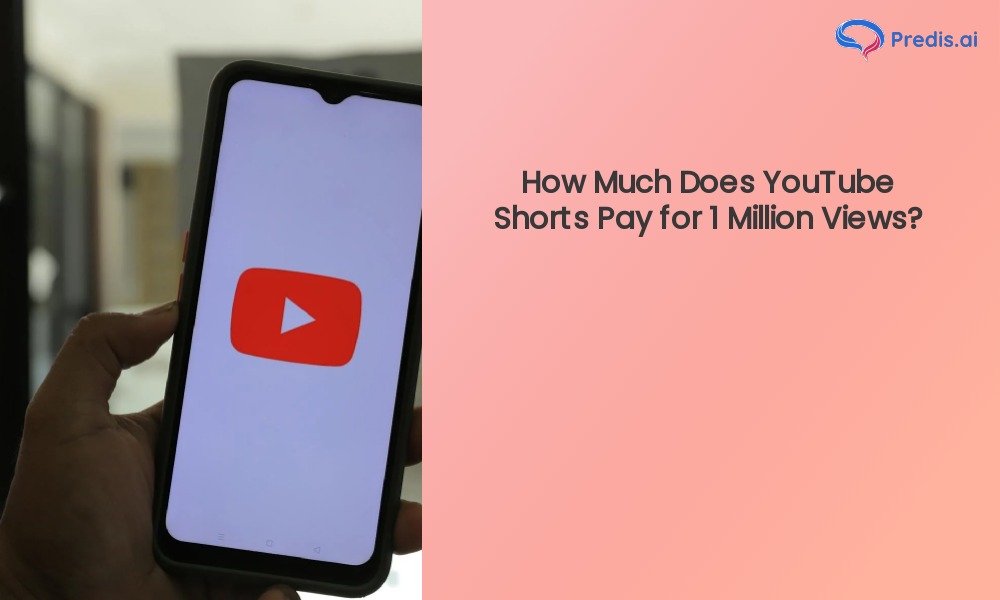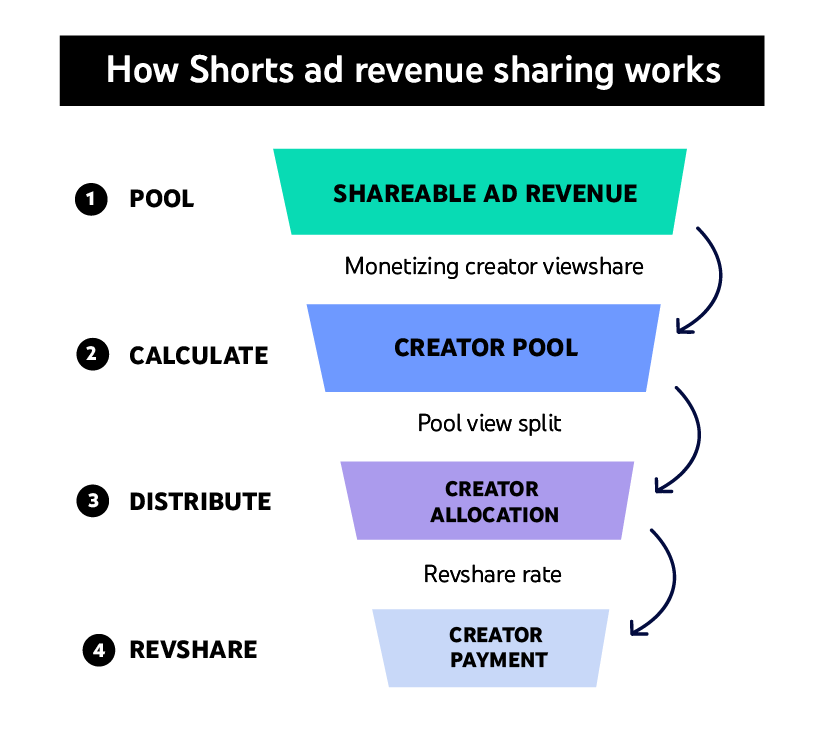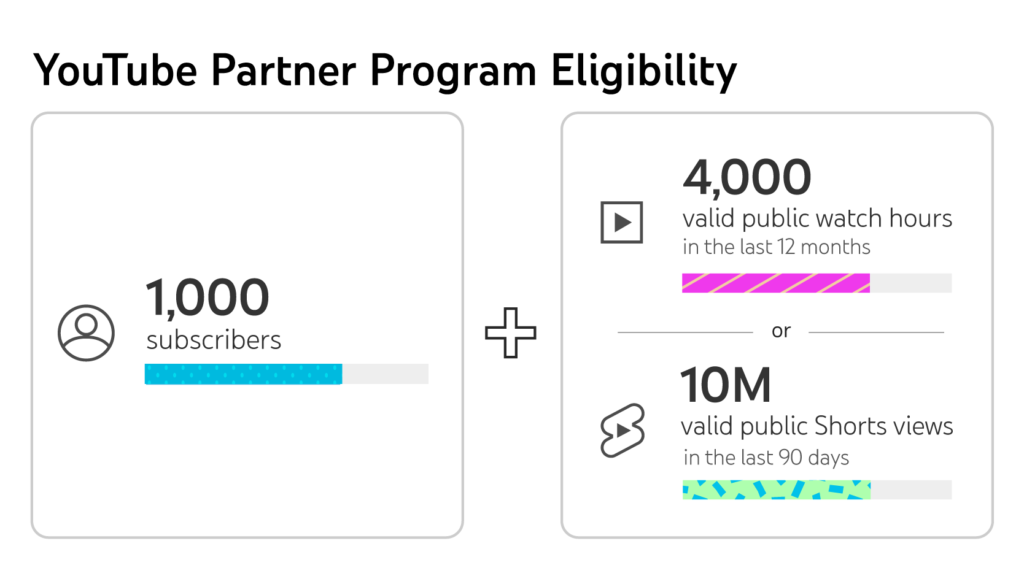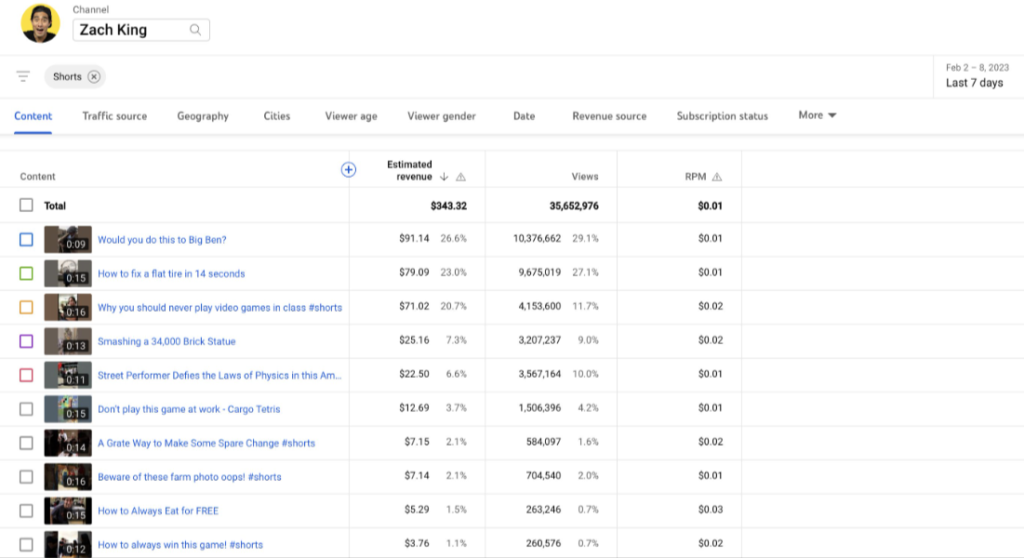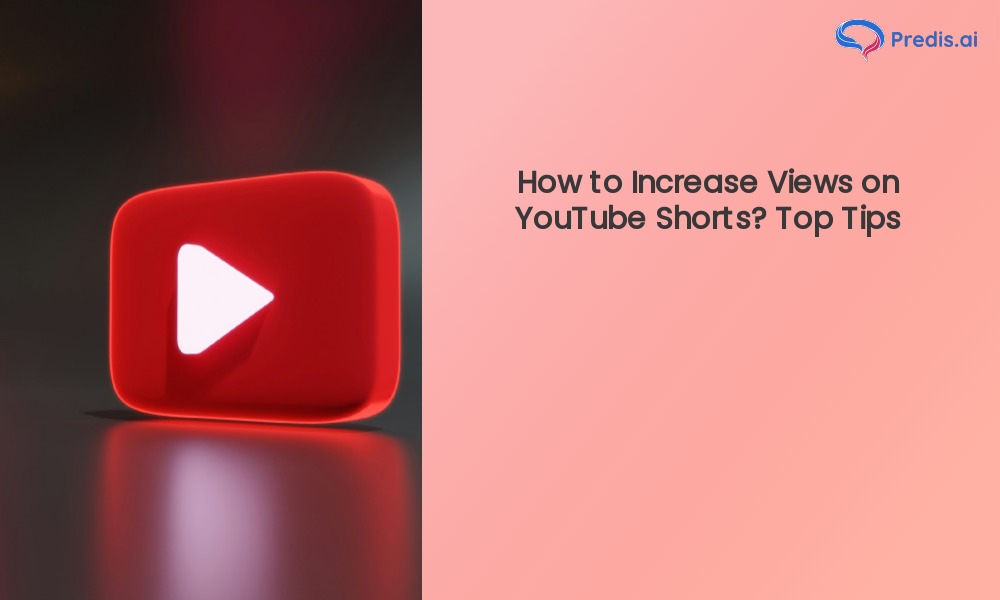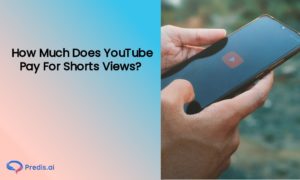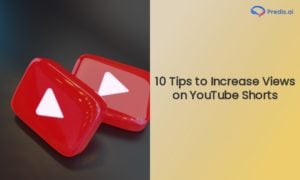Just like any other social media platform, YouTube is also betting big on short-form content.
Like Instagram reels and TikTok reels, YouTube Shorts has also gained immense popularity.
As of December 2023, there are 781 million Shorts on YouTube from 43 million channels.
Creators are also joining the race and producing more and more short-form content to keep their audience engaged.
With these numbers in mind, the real question for any YouTube creator is – How much does YouTube Shorts pay for 1 million views?
In this blog post, we’ll find out exactly that, apart from other useful information that will help you fuel your career as a creator or, better yet, a YouTuber.
How Do You Earn Money From YouTube Shorts?
Although the primary source of revenue is advertisements played between your videos, earning revenue through YouTube Shorts is slightly different from earning through long-form videos.
In the case of long-form videos, you are paid revenue based on the ads that your viewers watch.
But, in the case of Shorts, the process goes like this:
- YouTube clubs together all the revenue from ads shown between Shorts throughout the platform for every country.
- Then, it calculates how much of the revenue is needed to cover music licensing for tracks used in Shorts. That money is paid directly to music partners. The remaining amount goes into the Creator Pool.
- YouTube allocates a percentage of the total Creator Pool to each monetizing creator based on their share of total views in each country. For example, in your country, if you get 5% of the total Shorts views uploaded by monetizing creators, you’ll be allocated 5% of the revenue in the Creator Pool.
- Then, from this amount allocated to you, YouTube will take 55%, and you will get 45% of it.
How To Be Eligible For YouTube Shorts Monetization?
If you want to earn revenue from YouTube Shorts, then you need to be a part of the YouTube Partner Program (YPP), the requirements of which are as follows:
- You must have 1000 subscribers.
- You need to get 4,000 public watch hours from long-form videos in the last 365 days or 10 million public Shorts views in the last 90 days.
What is CPM and RPM?
It’s important to understand metrics like CPM and RPM to keep up with this article further.
Revenue Per Mille (RPM) is a metric that shows how much money you’ve earned per 1,000 video views.
Cost per 1,000 impressions (CPM) is a metric that shows the amount of money advertisers are spending to show ads on YouTube.
In other words, it is the cost an advertiser pays for 1,000 ad impressions. Any time an ad is displayed, it is counted as an impression.
RPM is the better metric to track when you want to test the effectiveness of your content strategy.
How Much Do YouTube Shorts Pay For 1 Million Views?
If you’re thinking about making good money from YouTube Shorts, then you need to know this.
Zach King, famous for creating mind-bending effects videos, tweeted about his YouTube Shorts ad revenue from Feb 2 – Feb 8, 2023, for approximately 35 million views. It was just $343.
IMDb further reports that Zach King made only $2918.10 from 196.4 million views during his first month on YouTube with Shorts.
Rob Wilson, YouTuber-in-residence at VidIQ, says about YouTube Shorts – “Yeah…they’re not going to make you rich”.
VidIQ just made $95 from 1 million Shorts views.
“At this rate, you need to bring in 100 million monthly views a month to make $10,000”, Rob further says.
So YouTube Shorts isn’t the best way to make money from YouTube. Although the revenue greatly depends on the factors discussed in the next section, the RPM isn’t quite what you’re looking for.
The common agreement among YouTube creators is that the RPM is coming in around $0.05 to $0.07 per 1000 views. That’s about $50 to $70 for a million views.
On YouTube, long-form content is where the money lies.
What are The Factors That Affect Your YouTube Shorts Earnings?
Your revenue from YouTube Shorts depends a great deal on the following factors:
1. Engagement and User Interaction
Engagement, including likes, comments, and shares, plays a pivotal role in influencing earnings. YouTube’s algorithm considers these engagement metrics when suggesting Shorts to users.
Consequently, videos with robust engagement are more likely to receive recommendations, leading to a surge in views and, ultimately, ad revenue.
2. Audience Demographics
Your YouTube Shorts revenue can be greatly influenced by the demographic makeup of your audience. Advertisers frequently allocate larger payments to target particular demographics.
In regions where people are more inclined to purchase their product or where purchasing power is higher, the CPM (Cost Per Mille) is also higher, while in areas where people are less inclined to make purchases, the CPM is notably lower.
In the same video by VidIQ above, Rob says that the CPM they receive from viewers in the United States is 10 times higher than the CPM received from their Indian audience.
3. Topic of your Videos
The advertisements displayed over your content are determined by the subject matter of your content. For instance, if your content relates to web hosting services, the CPM will likely be substantially higher compared to content related to dog food.
Your content’s topic dictates the advertisements, and the advertisements, in turn, influence the CPM.
4. Ad Format
YouTube features two kinds of ads that appear alongside your content: skippable and non-skippable.
If your viewers opt to skip the ads before completion, you won’t receive any payment from the advertiser. However, if they watch the ad in its entirety, you earn revenue.
With non-skippable ads, viewers are compelled to watch the entire ad before proceeding to the video. Consequently, you receive payment for each ad shown. YouTube determines when to display skippable and non-skippable ads.
Conclusion
In conclusion, while YouTube Shorts have surged in popularity, the monetary returns for creators might not match expectations. YouTube shorts pay for 1 million views but not as much as anticipated by many creators.
The revenue, dependent on various factors such as engagement, audience demographics, video topic, and ad format, often results in relatively lower earnings compared to long-form content.
Hence, creators looking for significant income should focus on long-form content.
However, Shorts still offer value in audience engagement and platform visibility.
So it’s essential for you as a creator to strike a balance between Shorts and long-form content, leveraging each format’s strengths to maximize your YouTube presence and income potential.
If you want to create stunning YouTube Shorts, try your hands on our AI-assisted tool that lets you generate awesome YouTube Shorts with just one-liner inputs. You can choose from a variety of available templates and even edit the shorts.
Plus, you can even schedule your short videos with a single click.
Related Content,


